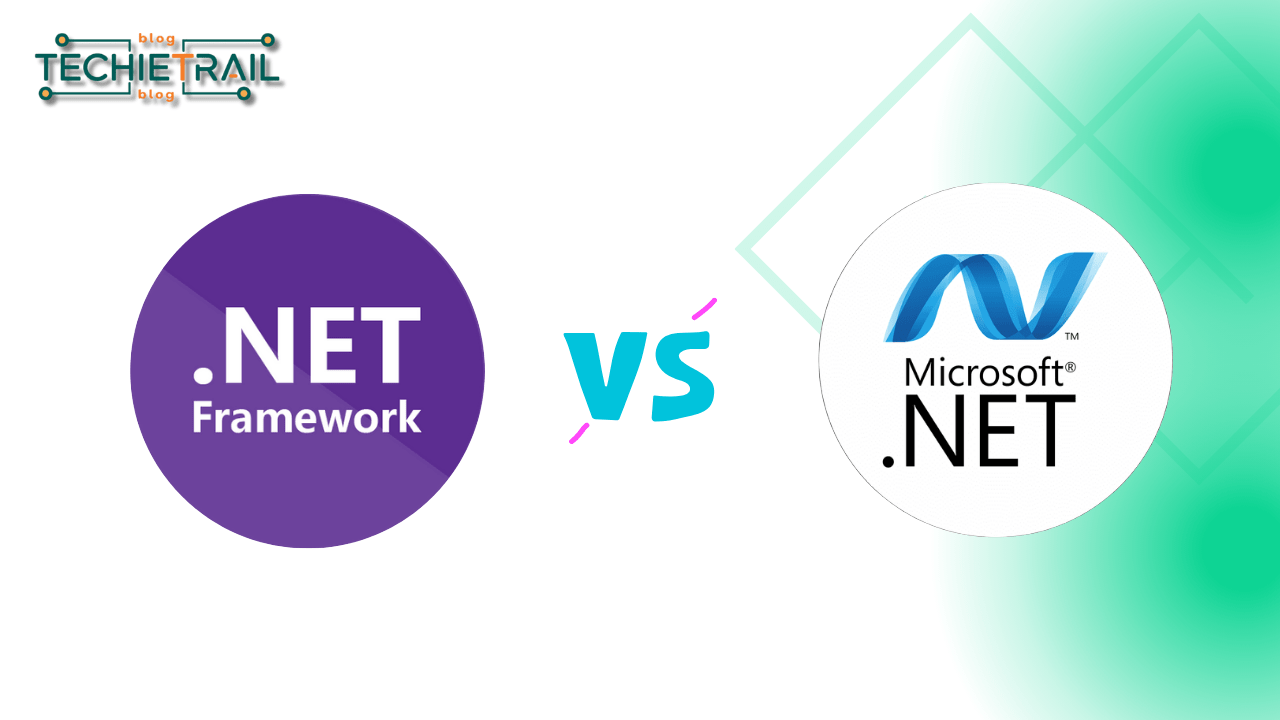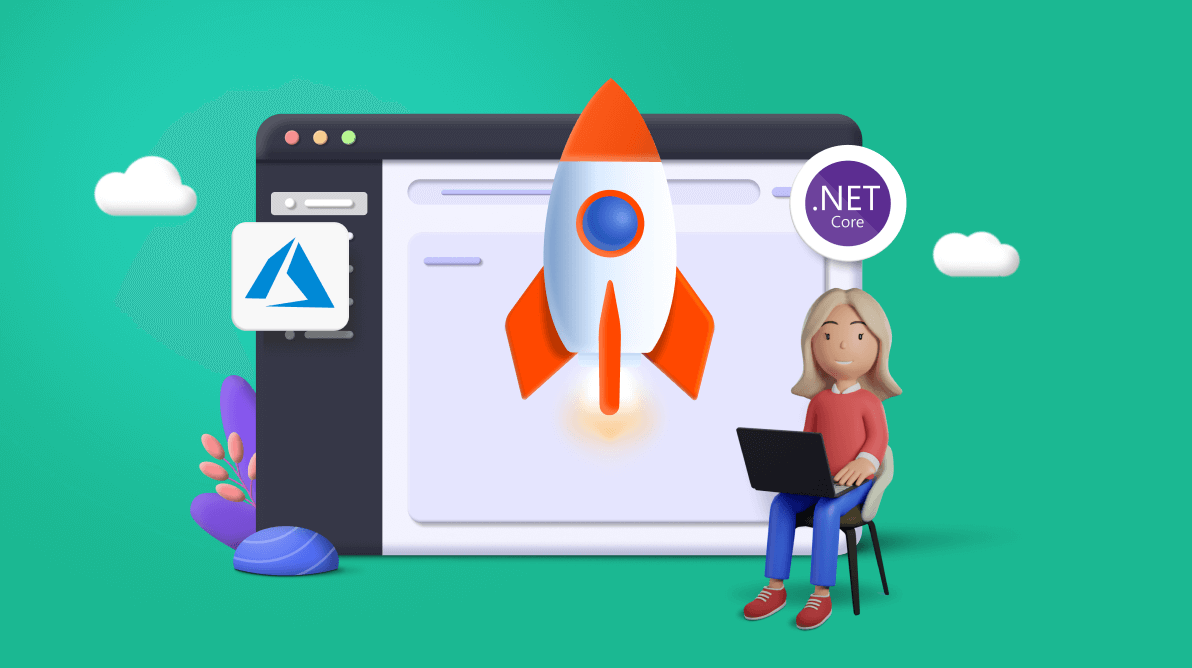In the era of rapid technological advancement and increasing demands on software performance, efficient resource management is crucial. One of the most effective techniques to achieve this is multithreading. This article will explore what multithreading is, how it works, its benefits, and its real-world applications, while also addressing the challenges it presents.
What is Multithreading?
Multithreading is a programming and execution model that allows multiple threads to run concurrently within a single process. A thread is the smallest unit of processing that can be scheduled by an operating system. By utilizing multithreading, a program can perform multiple tasks simultaneously, improving overall efficiency and responsiveness.
Each thread within a process can run independently while sharing the same memory space. This capability enables efficient communication between threads, making multithreading particularly effective for tasks that require concurrent execution.
Key Concepts
- Thread: The smallest sequence of programmed instructions that can be managed independently by a scheduler.
- Process: A program in execution that contains one or more threads.
- Context Switching: The process of saving the state of a currently running thread so that it can be resumed later, allowing the CPU to switch between different threads effectively.
How Does Multithreading Work?
In a multithreaded environment, a single process can create multiple threads. Each thread can execute tasks independently but shares the same memory space. This shared memory allows threads to communicate more efficiently compared to processes, which require more overhead for inter-process communication.
When a program initiates multiple threads, the operating system’s scheduler allocates CPU time for each thread, enabling them to run concurrently. This means that while one thread is waiting for I/O operations to complete, another thread can be actively executing, thereby improving the overall throughput of the application.
Thread States
Threads can exist in various states throughout their lifecycle:
- New: The thread is created but not yet started.
- Runnable: The thread is ready to run and waiting for CPU time.
- Blocked: The thread is waiting for a resource (like I/O operations) to become available.
- Terminated: The thread has completed execution.
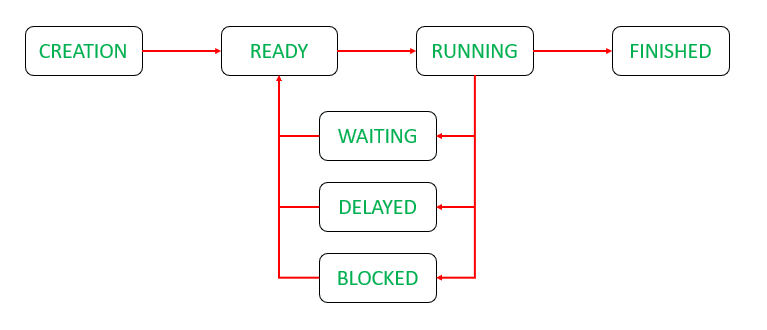
Benefits of Multithreading
- Improved Performance: Multithreading can significantly improve performance by better utilizing CPU resources. Instead of waiting for one task to complete, multiple threads can work in parallel, effectively reducing the execution time of applications.
- Enhanced Responsiveness: Applications can remain responsive to user input while performing background tasks. For example, a web browser can continue to load a page while running scripts or fetching data from the server.
- Resource Sharing: Threads share the same memory space and resources, which makes communication between them easier and faster. This shared environment is more efficient than processes, which require separate memory allocation.
- Scalability: Multithreaded applications can scale more effectively to accommodate more users or processes without significantly increasing resource usage. As the demand for applications grows, multithreading allows developers to create scalable solutions.
- Efficient Utilization of Multicore Processors: Modern CPUs have multiple cores, and multithreading allows programs to take full advantage of these resources, executing different threads on different cores simultaneously.
Challenges of Multithreading
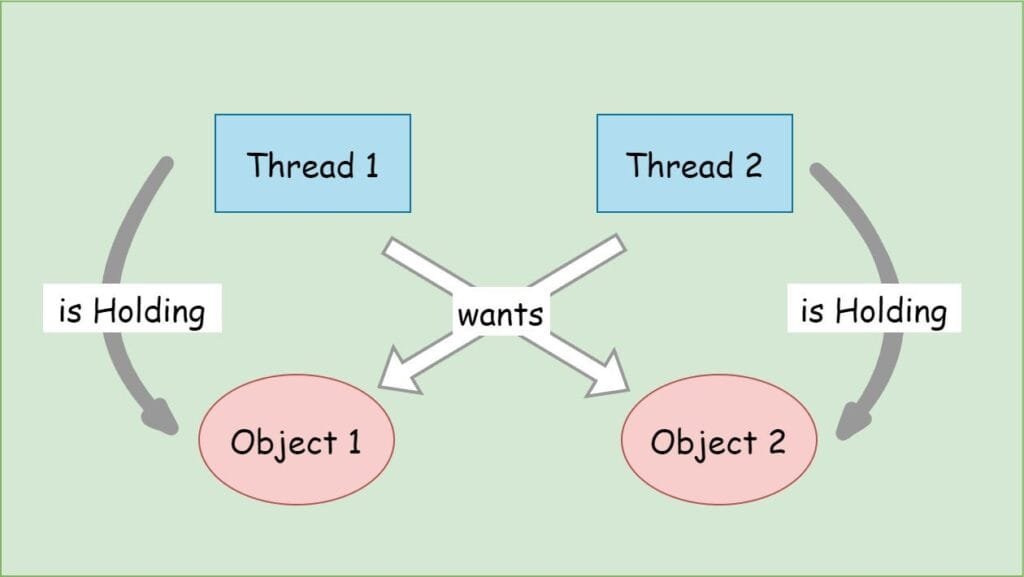
Despite its advantages, multithreading comes with challenges:
- Complexity: Writing multithreaded programs can be more complex. Developers must manage shared resources carefully to avoid issues such as race conditions (where two threads access shared data simultaneously) and deadlocks (where two or more threads are waiting for each other to release resources).
- Debugging Difficulty: Bugs in multithreaded applications can be harder to reproduce and fix due to the concurrent nature of execution. Identifying the root cause of issues that arise from race conditions or deadlocks can be particularly challenging.
- Overhead: While multithreading can improve performance, it also introduces overhead in terms of context switching and managing thread states. Excessive context switching can degrade performance if not managed properly.
- Synchronization Issues: Ensuring that threads operate correctly when accessing shared resources requires synchronization mechanisms (like mutexes or semaphores), which can lead to performance bottlenecks if not implemented carefully.
Real-World Applications of Multithreading
Multithreading is widely used across various applications and industries:
- Web Servers: Web servers handle multiple client requests simultaneously. For instance, Apache and Nginx use multithreading to improve response times and support many simultaneous users.
- Gaming: In video games, separate threads can be dedicated to graphics rendering, sound processing, and game logic. This ensures smooth gameplay, as different aspects of the game can run concurrently.
- Data Processing: In applications like data mining or big data analytics, multithreading can speed up data processing tasks by distributing the workload across multiple threads, significantly reducing processing time.
- Multimedia Applications: Video editing and rendering software leverage multithreading to handle multiple streams of data simultaneously, allowing for real-time playback and editing.
- Artificial Intelligence: In AI applications, multithreading can facilitate concurrent training of models or processing of large datasets, thereby accelerating the development of machine learning algorithms.
Multithreading vs. Multiprocessing
While multithreading allows multiple threads to run concurrently within a single process, multiprocessing refers to the use of multiple processes to execute tasks. Here’s a comparison between the two:
- Memory Sharing: In multithreading, threads share the same memory space, which makes communication faster. In contrast, processes have separate memory spaces, which can lead to higher overhead for inter-process communication.
- Overhead: Creating and managing threads is generally less resource-intensive than managing processes. However, threads may encounter issues with resource contention, whereas processes can be more isolated.
- Performance: Multithreading can offer better performance for tasks requiring frequent communication and resource sharing, while multiprocessing can be more effective for CPU-bound tasks where processes can be executed independently.
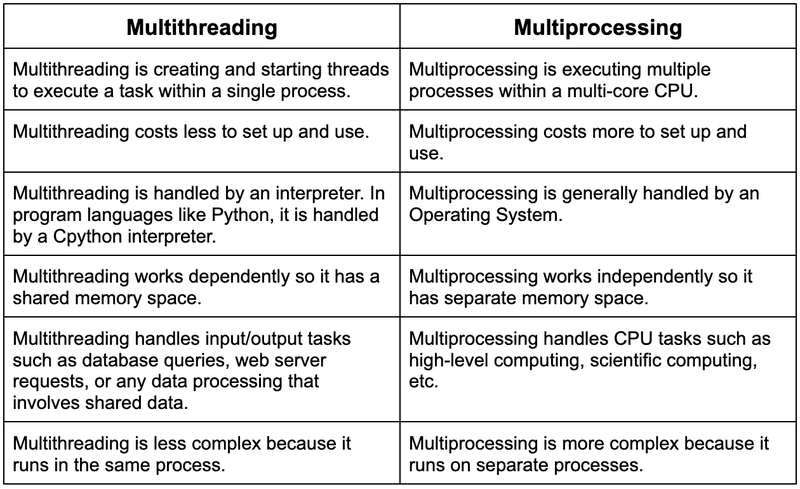
Best Practices for Implementing Multithreading
To effectively implement multithreading in your applications, consider the following best practices:
- Identify Suitable Tasks: Not all tasks benefit from multithreading. Focus on tasks that are independent and can run concurrently without requiring excessive synchronization.
- Use Thread Pools: Instead of creating and destroying threads for each task, utilize thread pools to manage a fixed number of threads for executing tasks. This approach reduces overhead and improves performance.
- Avoid Shared State: Minimize the use of shared resources between threads. If possible, design your application to use immutable data or pass messages between threads to avoid synchronization issues.
- Implement Proper Synchronization: When shared resources are necessary, use synchronization mechanisms judiciously to prevent race conditions and deadlocks. Choose the right tool (like mutexes, semaphores, or monitors) based on your needs.
- Monitor and Test: Continuously monitor the performance of your multithreaded applications and perform rigorous testing to identify and resolve potential issues related to concurrency.
- Leverage Existing Libraries: Many programming languages offer libraries and frameworks that simplify multithreading implementation (e.g., Java’s java.util.concurrent, C#’s Task Parallel Library). Utilize these resources to save time and reduce complexity.
Conclusion
Multithreading is a powerful programming technique that enhances application performance, responsiveness, and resource utilization. Despite the complexities and challenges involved, its advantages make it a fundamental concept in modern software development. As technology continues to advance, understanding and implementing multithreading will remain crucial for developers aiming to create efficient and scalable applications.
Key Takeaways:
- Multithreading allows concurrent execution of tasks within a single process.
- It improves performance, responsiveness, and scalability while also leveraging multicore processors.
- Understanding the challenges and best practices is essential for effective implementation.
By mastering multithreading, developers can significantly enhance the efficiency of their applications, paving the way for innovative solutions across various fields.
You can also read Serverless Microservices

